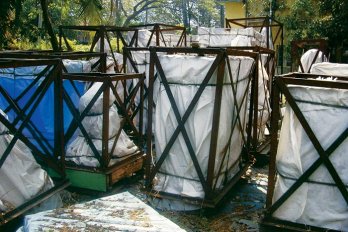walrus island—It was an impulse purchase. I was shopping at the West Baffin Eskimo Co-operative, the centre of the Inuit art world, in Cape Dorset. There, among the hugely expensive soapstone carvings and lithographs by legendary artists such as Kenojuak Ashevak, was a modest hand-printed sign. “Walrus Penis, $50,” it said.
In size and shape, the object in question could have been a very large, very hard baseball bat, made of bone. It fitted my budget (the cheapest walrus soapstone carving was $250), and I put down my money. With the gst, it came to $53.50.
“If Trudeau promised to keep the state out of the bedrooms of the nation, how come they’re taxing penises? ” asked Matthew Swan, director of Adventure Canada, the travel company leading our eleven-day Arctic expedition. The clerk who rang up my purchase told me the penis is called an usuk, and handed it to me, appropriately enough, in a Home Hardware bag.
The penis made for a great conversation piece. Before I could leave the store, I was immediately surrounded by shoppers. Outside, I was besieged by other tourists. Men and women studied it with equal interest. Bill Davis, a staff member aboard our ship, said, “We’re about the only large mammal that doesn’t have one of those bones. Pity.” Even the receipt—‘Item: walrus penis; Quantity: one’—elicited admiration.
Some fellow passengers were disappointed that I had seen it first. “Where did you get that penis? ” I was asked. “Do they have more? ” They did, but only one, and it had already been snapped up by a woman from Toronto. They could have sold a dozen walrus penises in Cape Dorset that day.
The Arctic is, of course, walrus territory. The next day, eight of the vast Rubenesque creatures, which can exceed 3.6 metres in length and weigh 1,400 kilograms, were sun-bathing near me on the shore of Walrus Island, a bleak granite outcrop rising abruptly out of the frigid northern reaches of Hudson Bay. The island (one of about eleven within the Arctic sharing the same name) serves the creatures as a summer haulout site. A dozen more were cavorting just offshore, a mere clam’s throw from where I was to land. The air was ripe with an oily, fishy odour emitted from the voluptuous folds of the animals’ leathery skin. The stench was overpowering, but I was determined to set foot on Walrus Island.
Aaron Lawton, who ferried me out to the island on a Zodiac, warned me not to stay long. “There are polar bears around here,” he yelled over the drone of the sixty-horsepower Yamaha engine, “and walruses can also be aggressive.” As I took my first tentative steps on Walrus Island, I noticed with alarm that, up close, walrus tusks seem longer than I expected (they can grow to forty-five centimetres) and as sharp as Yemeni daggers. Even polar bears leave adult walruses alone, and Inuit hunters have purportedly been stalked by walruses at the floe edge.
Then there’s the metre-long usuk. I had a bad feeling about it. Was there some way the walruses could deduce that I was in possession of an usuk? Was there such a thing as walrus intuition? Surely an usuk is worth more than $53.50 to them.
I cut my visit short and scrambled into the Zodiac, telling Aaron, “Let’s get out of here!” Back on the ship, I stuffed the usuk into a drawer under the bed.
I don’t view it as a coincidence that I was the only passenger on the ship to have seen a walrus swimming off the port that night as we steamed through the Hudson Strait. After all, I was the one in possession of the walrus penis. In the southern Arctic at this time of year, it is light late into the evening, so I could see the walrus clearly as it thrust its massive trunk out of the water, then plunged back down. It swam under my porthole for several minutes, and it looked distinctly angry.
This appeared in the October 2003 issue.





